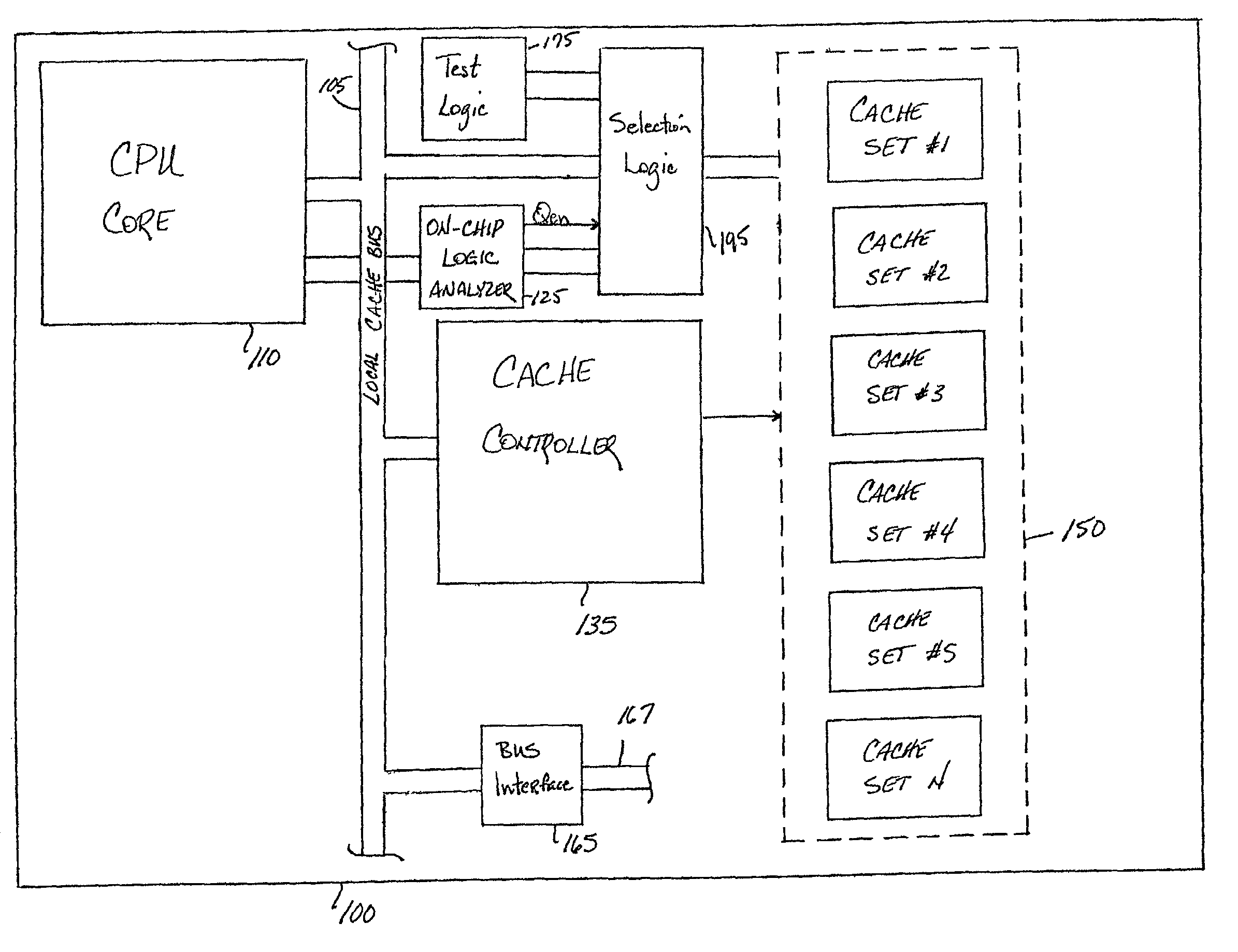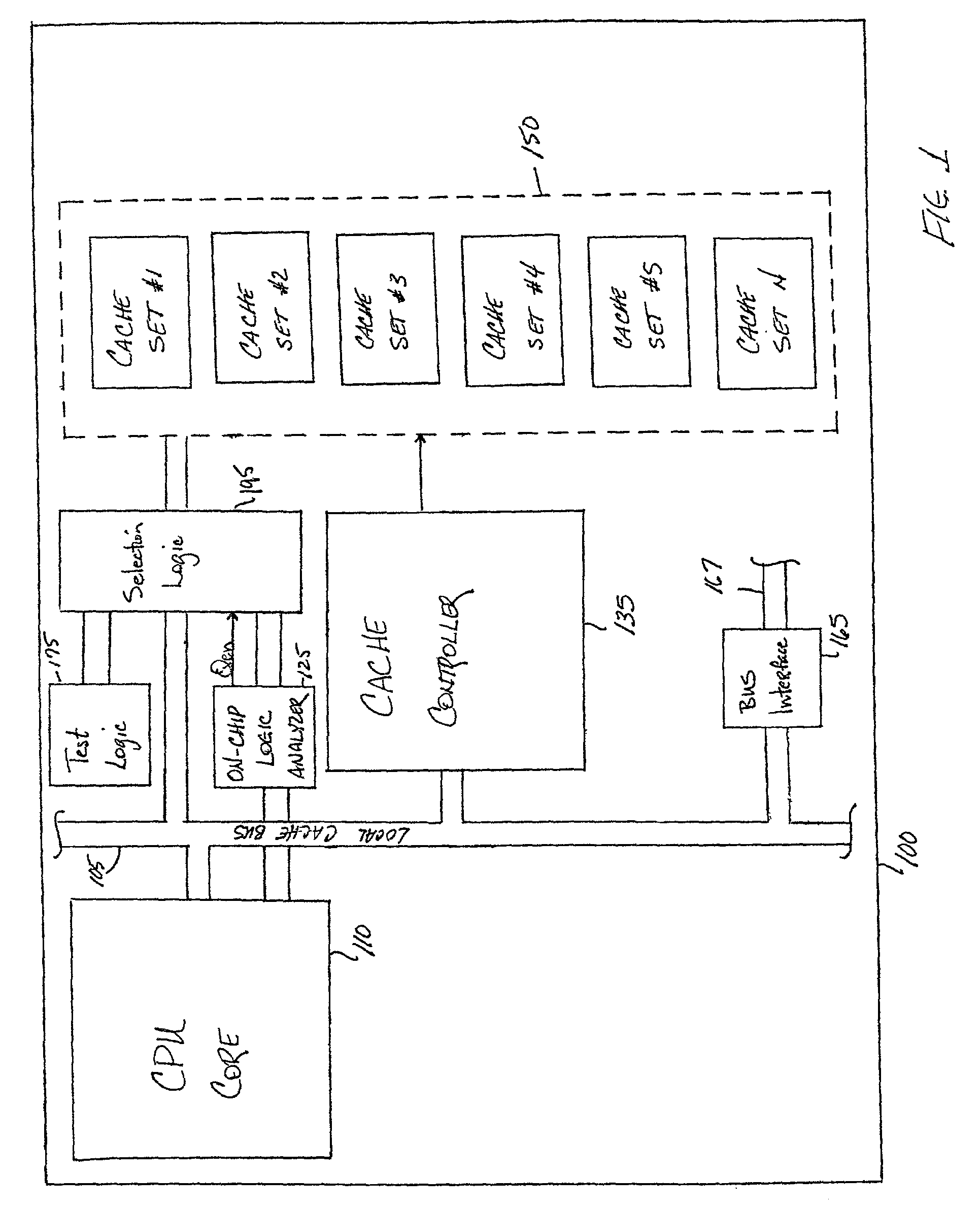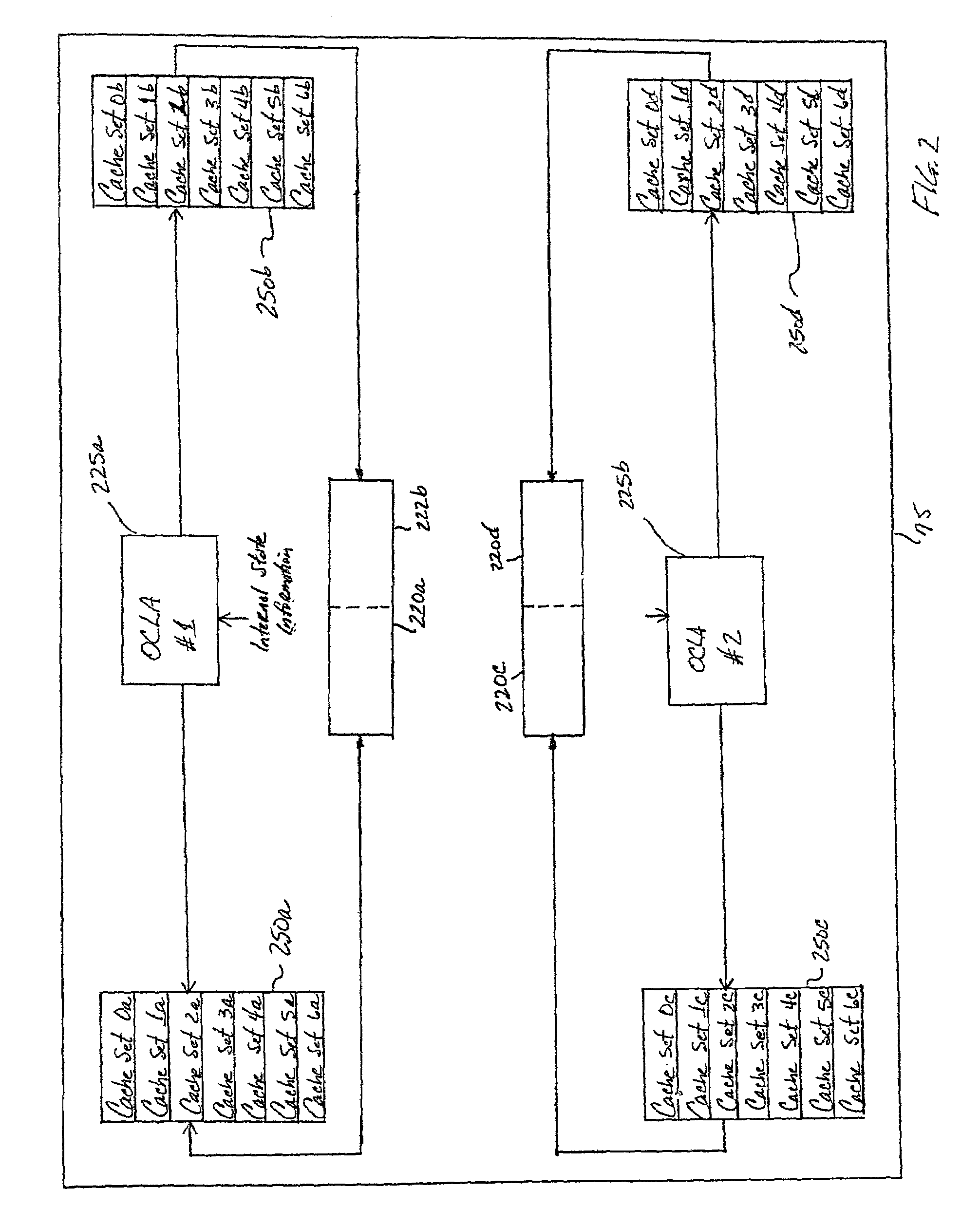Method and apparatus for efficiently implementing trace and/or logic analysis mechanisms on a processor chip
a logic analysis and processor chip technology, applied in the direction of detecting faulty computer hardware, error detection/correction, instruments, etc., can solve the problems of increasing the length of the debug phase, requiring a greater advanced lead time, and the design and development of digital logic circuits have become increasingly complex, so as to achieve the effect of reducing the design risk
- Summary
- Abstract
- Description
- Claims
- Application Information
AI Technical Summary
Benefits of technology
Problems solved by technology
Method used
Image
Examples
Embodiment Construction
[0026]Referring initially to FIG. 1, the present invention constructed in accordance with the preferred embodiment generally comprises an integrated processor 100 that includes a CPU core 110 coupled to a cache memory 150. In accordance with normal convention, a cache controller 135 controls memory accesses to the cache memory 150. The CPU core 110, the cache controller 135 and the cache memory 150 preferably are coupled to a local cache bus 105. Other devices may also be coupled to the local cache bus 105, including a local bus interface 165 that interfaces the local cache bus 105 to a processor local bus 167. Various other devices may reside on the local bus 167, including an on-chip memory controller (not shown) that controls accesses to a system memory (not shown), and an on-chip I / O controller that controls accesses to both internal and external I / O devices. The processor 100 may be designed to operate in a multiple processor environment, and thus may be capable of transmitting...
PUM
 Login to View More
Login to View More Abstract
Description
Claims
Application Information
 Login to View More
Login to View More - R&D
- Intellectual Property
- Life Sciences
- Materials
- Tech Scout
- Unparalleled Data Quality
- Higher Quality Content
- 60% Fewer Hallucinations
Browse by: Latest US Patents, China's latest patents, Technical Efficacy Thesaurus, Application Domain, Technology Topic, Popular Technical Reports.
© 2025 PatSnap. All rights reserved.Legal|Privacy policy|Modern Slavery Act Transparency Statement|Sitemap|About US| Contact US: help@patsnap.com



